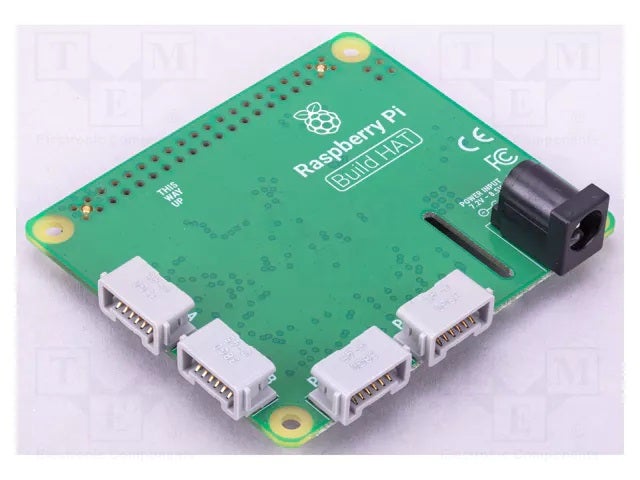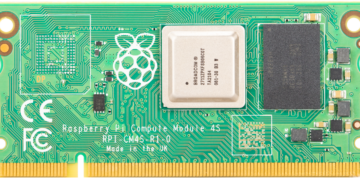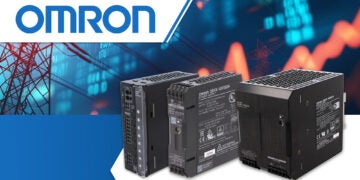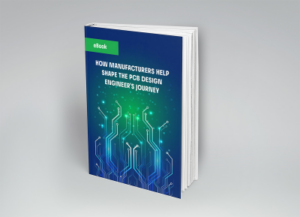
Build HAT Raspberry Pi Hat expansion board available at TME
Engineers and developers seeking to maximize the capabilities of their Raspberry Pi projects know that expansion boards are essential for professional applications. TME (Transfer Multisort Elektronik) Electronic Components, an Approved Reseller of Raspberry Pi HATs, provides an extensive selection of Raspberry Pi HAT (Hardware Attached on Top) expansion boards that transform single-board computers into powerful, specialized devices. Whether you’re developing IoT prototypes, industrial automation systems, or educational projects, TME’s comprehensive Pi HAT selection offers the perfect solution for your specific requirements.
TME Raspberry Pi HAT Expansion Boards
TME maintains one of the electronics industry’s most comprehensive catalogs of Raspberry Pi accessories, featuring 14 certified expansion boards covering diverse application domains. While Raspberry Pi Foundation officially offers approximately 15-20 different HAT and HAT+ models across various categories, TME’s carefully curated selection, shown below, includes the most in-demand modules for AI acceleration, audio processing, power management, and connectivity enhancement.
| Raspberry Pi HAT Expansion Boards from TME | |||
| HAT Model | Primary Function | Key Features | Typical Applications |
| AI HAT+ 26 TOPS | Machine Learning | Hailo-8L accelerator, 26 TOPS | Computer vision, AI inference |
| AI HAT+ 13 TOPS | Machine Learning | Hailo-8L accelerator, 13 TOPS | Edge AI, smart cameras |
| M.2 HAT+ Compact | Storage Expansion | PCIe 2.0 interface | High-speed storage, boot drives |
| M.2 HAT | Storage Expansion | PCIe support, larger form factor | Enterprise storage solutions |
| PoE+ HAT (R2) | Power Management | 25W PoE+ capability | Network devices, remote installations |
| Build HAT | Educational/Robotics | LEGO Technic compatibility | Educational projects, robotics |
| Sense HAT Rev.2 | Environmental Sensing | Multi-sensor array, LED matrix | Weather stations, IoT monitoring |
| DAC PRO | Audio Processing | PCM5242 chipset, 24-bit/192kHz | High-fidelity audio, media players |
The list above is not exhaustive in terms of Raspberry Pi board types and accessories; however, it does represent some of the diverse capabilities and applications for Raspberry Pi HAT expansion boards. You can find a complete listing of various Pi HAT devices, along with important component data, at the TME site.
Raspberry Pi HAT Installation Guidelines
Raspberry Pi HAT expansion boards, similar to other reference designs, provide a proven foundation for project development that significantly improves development efficiency while minimizing time and costs. Realizing these advantages does require that proper HAT installation guidelines be followed. These include paying special attention to mechanical alignment, electrical connections, and thermal management.
Mechanical Alignment: Verify PCB flatness before installation using precision measurement tools. Warped boards create uneven contact pressure, leading to intermittent connections and premature solder joint failure. Maintain consistent mounting torque across all standoffs to prevent mechanical stress.
Electrical Connections: Modern HAT+ boards feature enhanced GPIO management capabilities, but legacy compatibility requires verification. Check GPIO pin assignments against existing project requirements, particularly for custom I2C, SPI, or UART implementations.
Thermal Management: High-performance HATs, such as AI accelerators, generate substantial heat, requiring active cooling solutions. TME’s AI HAT+ boards operate optimally with dedicated cooling solutions, particularly in continuous operation environments. Position thermal pads correctly to ensure efficient heat transfer from processing components to heat sinks.
For complex projects, you may want to utilize Raspberry Pi 5. This credit card-sized board offers all the capabilities of a modern computer, including features like two four-lane MIPI transceivers, a PCIe 2.0 slot, two HDMI ports, and an onboard Real-Time Clock (RTC). Although HAT+ boards are designed to maintain backward electrical compatibility, it is important to verify compatibility. For example, Pi 5 supports higher current to support new features such as AI acceleration and high-speed storage. Important design considerations are:
Raspberry Pi 5 Compatibility Considerations
- Power Supply Considerations: Raspberry Pi 5 requires 27W power supplies for optimal HAT operation, particularly with power-hungry AI accelerators. TME stocks compatible 27W USB-C power supplies specifically designed for high-performance configurations.
- PCIe Interface Optimization: New PCIe functionality enables unprecedented expansion possibilities. TME’s catalog includes specialized PCIe-compatible HATs optimized for Raspberry Pi 5’s enhanced capabilities, including dual M.2 configurations and PCIe switching solutions.
Best Practices for Pi Hat Design and Integration
Professional HAT implementation requires a systematic approach to electrical design, mechanical integration, and testing and validation. These proven techniques ensure reliable operation across diverse application environments.
Electrical Design Best Practices
- Power Distribution:
Implement robust power distribution with adequate copper pour areas for high-current applications. Utilize split-plane techniques for analog/digital power separation, which is particularly critical for audio and sensor applications.
- Signal Integrity:
Maintain proper impedance matching for high-speed signals, especially PCIe interfaces. Follow differential pair routing guidelines for USB-C and PCIe connections, using controlled impedance traces with appropriate ground planes.
- EMI Mitigation:
Implement comprehensive EMI shielding strategies, including ground planes, ferrite beads, and proper trace routing. Position sensitive analog circuits away from switching power supplies and high-frequency digital circuits.
- Component Placement:
Optimize component placement for thermal performance and signal integrity. Place heat-generating components near board edges for improved thermal dissipation, and maintain adequate spacing for airflow.
Mechanical Integration Best Practices
- Standoff Configuration:
Use appropriate standoff heights to prevent mechanical interference with onboard components. Consider the stacking height when implementing multiple HATs to ensure adequate clearance for connectors and heat sinks.
- Connector Selection:
Choose robust connectors for external interfaces, particularly for industrial applications. TME’s catalog features industrial-grade connectors designed for use in harsh environments and high-vibration applications.
- Enclosure Compatibility:
Design HAT layouts considering intended MCAD requirements, such as enclosure constraints. Maintain connector accessibility while ensuring adequate ventilation for thermal management.
Testing and Validation Best Practices
- Electrical Testing:
Perform comprehensive electrical validation, including power supply ripple, signal integrity, and EMI compliance testing. Use proper test equipment to verify performance across operating temperature ranges.
- Thermal Validation:
Conduct thermal testing under worst-case operating conditions. Monitor component temperatures and verify cooling solution effectiveness across anticipated ambient temperature ranges.
- Reliability Testing:
Implement accelerated aging tests for critical applications. Verify solder joint integrity, connector reliability, and long-term performance characteristics.
Frequently Asked Questions1. What is HAT (Hardware Attached on Top)? HAT stands for “Hardware Attached on Top,” representing a standardized add-on board specification for Raspberry Pi single-board computers. HATs connect through the 40-pin GPIO header, providing additional functionality while maintaining mechanical and electrical compatibility across different Raspberry Pi models. The HAT specification includes standardized mounting hole positions, connector placement, and power requirements, ensuring reliable integration. Modern HAT+ boards offer enhanced capabilities, including daisy-chaining multiple boards and improved power management, making them ideal for complex projects requiring multiple expansion modules. 2. Can you install multiple HAT expansion boards on Raspberry Pi? Yes, you can connect multiple HAT+ boards to a single Raspberry Pi using several methods. The newer HAT+ specification specifically supports daisy-chaining multiple boards through enhanced GPIO management and standardized stacking connectors. For legacy HATs, multiple installation requires GPIO pin management to avoid conflicts, often using ribbon cables or custom interface boards. When implementing multiple HATs, consider power requirements, as some high-performance boards, such as AI accelerators, may exceed the Raspberry Pi’s power delivery capabilities, requiring external power supplies or power management boards. 3. Are HAT expansion boards for RPi 4 compatible with Raspberry Pi 5? HAT+ expansion boards designed for Raspberry Pi 4 are electrically backwards-compatible with Raspberry Pi 5, but may require firmware or software updates for optimal functionality. The Raspberry Pi 5’s enhanced power capabilities (27W vs 15W) and new PCIe interface provide better performance for power-hungry HATs, particularly AI accelerators and high-speed storage boards. Some original HAT specification boards may have mechanical compatibility issues due to connector positioning changes. TME recommends verifying specific HAT compatibility before purchase, as some boards may require updated drivers or configuration changes for Raspberry Pi 5 operation. 4. What power considerations are important for HAT expansion boards? Power requirements vary significantly between different HAT types, with simple sensor boards requiring minimal current while AI accelerators may demand several amperes. The Raspberry Pi 5 supports higher power delivery through its enhanced power management system, but external power supplies become necessary for multiple high-power HATs. Consider the total power budget, including the base Raspberry Pi consumption (typically 3-5W idle) plus each HAT’s requirements. TME recommends using their 27W power supplies for high-performance configurations and implementing proper voltage monitoring for critical applications. Power-over-Ethernet HATs provide an alternative power delivery solution for remote installations where traditional power supplies aren’t practical. 5. Which applications benefit most from Raspberry Pi HAT expansion boards? Industrial IoT deployments leverage HATs for sensor integration, communication protocols, and environmental monitoring. Educational robotics projects utilize HATs for motor control, sensor input, and interactive learning experiences. Audio applications benefit from dedicated DAC and amplifier HATs providing professional-quality sound processing. Machine learning projects increasingly rely on AI accelerator HATs for edge computing applications, particularly computer vision and real-time inference. Home automation systems integrate multiple HATs for lighting control, security monitoring, and environmental management. TME’s diverse HAT selection supports applications ranging from prototype development to commercial product deployment across multiple industries. |
Implementing a Raspberry Pi HAT expansion board for your project can provide significant time and cost benefits, as it reduces design and development requirements. Yet, fully leveraging these benefits is only possible when you follow installation and design best practices, as discussed above.
If you’re looking for CAD models for common components or important design information on Raspberry Pi hat expansion boards, Ultra Librarian helps by compiling all your sourcing and CAD information in one place.
Working with Ultra Librarian sets up your team for success to ensure streamlined and error-free design, production, and sourcing. Register today for free.








